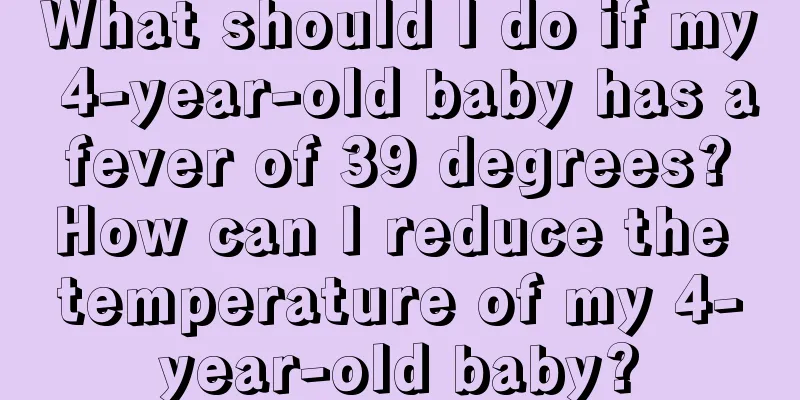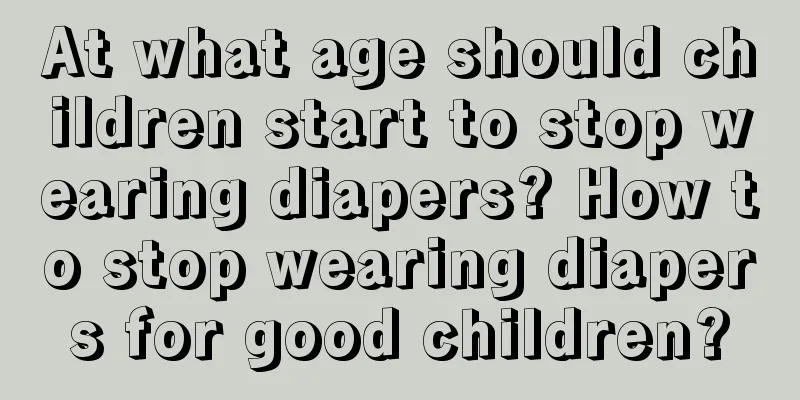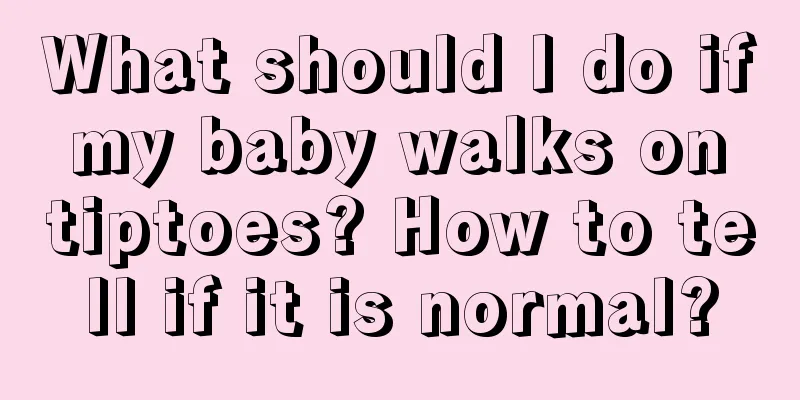What should I do if my 4-year-old baby has a fever of 39 degrees? How can I reduce the temperature of my 4-year-old baby?

|
The last thing a mother wants to encounter is a baby having a fever, especially when the baby has a high fever of 39 degrees. The mother will feel very uncomfortable. So what should I do if my 4-year-old baby has a fever of 39 degrees? How to reduce the temperature of a 4-year-old baby with a fever of 39 degrees? What to do if a 4-year-old baby has a fever of 39 degreesWhen the baby's fever does not exceed 38.5 degrees, it is recommended to use physical cooling only. However, if it exceeds 38.5 degrees or the child has a history of convulsions, antipyretics should be used in time. It should be noted that when parents need to use medication, they must use it under the guidance of a doctor and must not use it blindly. Don't rush to give medicine to babies with fever. If the baby's fever does not go down after taking the medicine once, you need to wait 4-6 hours before taking the medicine again. Remember, antipyretics only have an antipyretic effect when the baby has a fever. When the baby does not have a fever, taking antipyretics will not prevent fever. If the baby is under 1 year old, it is best to use drops, because the drug concentration of drops is small and less irritating. For babies over 2 years old, it is best to take oral liquid antipyretics. When the baby has a fever of 39 degrees, parents should not only take antipyretics, but also give the baby plenty of warm water to replenish body fluids during daily care. Drinking plenty of warm water is the most basic way to reduce fever. It is a very practical and effective method suitable for all babies with fever. But parents must remember not to give the baby cold water, because fever is often accompanied by gastrointestinal symptoms and coughing, and drinking cold water will aggravate these accompanying symptoms. How to reduce the fever of a 4-year-old baby with a fever of 39 degrees1. Let your baby drink more water and replenish body fluids. This is the most basic method of cooling down. It is very effective and practical and suitable for all babies with fever. 2. Warm water sponge bath, that is, wipe the whole body with a warm water towel. This is a good way to cool down, and it is also suitable for all babies with fever. The water temperature is more suitable at 32-34 degrees, and each sponge time is more than 10 minutes. 3. Warm water bath: The water temperature is about 3-4℃ lower than the sick child's body temperature, and each bath lasts 5-10 minutes. Many parents think that babies cannot take a bath when they have a fever. In fact, on the contrary, a warm water bath can help the baby cool down. 4. Low-temperature chamber method: Place the sick child in an environment with a room temperature of about 24°C to slowly lower the body temperature. In order to allow the child's skin to come into contact with the outside air and thus cool down, the child needs to wear less clothes. If conditions permit, use air conditioning to lower the room temperature. 5. Cooling patch: Cooling patch is a new product in recent years. It is very popular. In fact, the cooling effect is average and not as exaggerated as the advertisements say. Putting a patch on the baby's forehead will make the baby's head feel more comfortable, and the parents will also feel more comfortable. It should be beneficial and harmless. 6. Ice compress: There is still much controversy about the pros and cons of this method. Ice compress may cause the capillaries in the baby's skin to contract, hindering heat dissipation and causing the body temperature to rise, especially when accompanied by chills and shivering. Ice compress should not be used. What medicine should a 4-year-old baby take if he has a fever of 39 degrees?1. Acetaminophen is the first choice antipyretic drug for high fever in infants and children recommended by the World Health Organization. Its antipyretic effect is mild and lasting, and it is characterized by good efficacy, few side effects, and rapid and complete absorption. 2. Ibuprofen, which has a fast cooling speed and significant effect, and can last for 6 to 8 hours, has few side effects, and can reduce the number of medications. The side effects are relatively small. 3. Aspirin has a strong antipyretic effect, but its side effects are relatively large. It is generally safe to use it in small doses for a short time. Lysine aspirin is commonly used for injection in clinical practice, and it works quickly. However, there have been many reports of children taking aspirin causing Reye's syndrome (a serious disease), so close attention should be paid. 4. Nimesulide, a new type of non-steroidal anti-inflammatory analgesic, has a better antipyretic effect than ibuprofen, but its side effects are relatively large, especially side effects on the liver have been repeatedly reported. 5. Indomethacin, a non-steroidal anti-inflammatory analgesic, has a strong and lasting antipyretic effect. Due to the high incidence of adverse reactions of this product, it has varying degrees of side effects on liver function, kidneys and blood systems, and is generally not used. 6. Analgin is an old antipyretic drug with a rapid antipyretic effect. However, it can cause more serious adverse reactions such as granulocytopenia and kidney damage. It is only used for emergency antipyretic in cases of acute high fever and severe condition, and no other effective antipyretic drugs are available. It is usually used only once to ensure safety. Oral administration is no longer used, and a 20% solution can be used for nasal drops to reduce fever. 7. Chinese herbal antipyretics. Many Chinese herbal medicines have antipyretic effects to varying degrees. However, since the antipyretic effect of Chinese herbal medicines is slow and the medicinal ingredients they contain are not very clear, it is not recommended that parents use Chinese herbal medicines as antipyretic drugs. |
<<: How to treat acne on newborn baby's face and how to prevent acne
>>: How to treat bronchitis in children?
Recommend
Can I breastfeed while I have my period? Can I have my period while I am breastfeeding?
Breastfeeding during breastfeeding has become the...
What should I do if my baby always wakes up during sleep? How to improve my baby's sleep
It is very difficult for parents to coax their ba...
How to make your baby smarter? 3 simple actions to make your baby smarter
Doing these three small actions with your baby of...
Hypnobirthing makes childbirth easier
Hypnobirthing is a method of childbirth that reli...
How to reduce children's learning pressure and what are the behavioral reactions
Children may feel pressured by exams during schoo...
What is the truth behind students cooking in class? How to improve children's interest in learning?
Recently, news broke out online that students wer...
When is the best time to have a baby? What is the best age to have a baby?
Newlyweds want to have children at the most appro...
Is it necessary to buy baby rice cereal? Is it good to have white sugar in baby rice cereal?
Baby rice cereal is a very common baby product on...
How to bathe your baby? Things to note when bathing your baby
Babies are relatively young and delicate, so they...
Why do children have swollen eyes due to allergies? How to reduce swelling in children's eyes due to allergies?
Everyone is likely to experience allergic symptom...
What are the smart toys? How is the smart toy market?
Smart toys seem to be more attractive to children...
Does caries in deciduous teeth affect permanent teeth?
Does caries in baby teeth affect permanent teeth?...
How to judge children's precocious puberty? How to prevent children's precocious puberty?
As the environment in which children live becomes...
What kind of shoes should I wear during confinement in winter? What kind of shoes should I wear during confinement in winter?
Mothers who are in confinement in winter must pay...
What medicine should I take for low progesterone? Is it useful to take progesterone capsules for low progesterone?
Low progesterone can easily lead to female infert...









